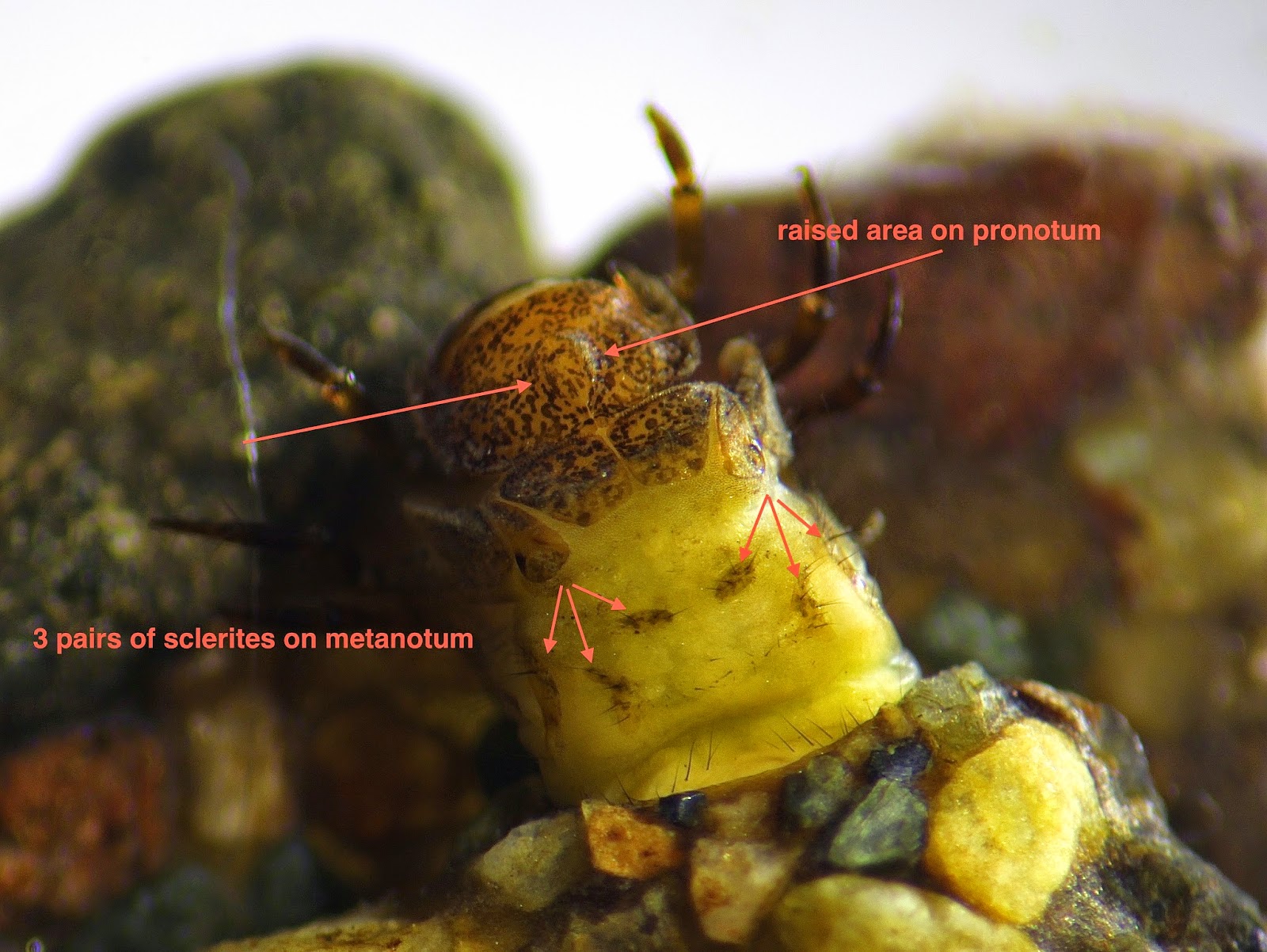Thursday, October 9, 2014
Goera (Weighted-case maker) day in Sugar Hollow: in twos and threes and fours!
I knew that the water was low -- but I decided to have a look anyway -- so off to one of my favorite streams. I didn't see much -- too early for the stoneflies and mayflies to fill up the leafpacks -- though I did see quite a few small Giant stones. But there were Goeras all over the place. How did I miss them in previous years? Simple enough. Their cases look exactly like little pebbles that are scattered on rocks. But they no longer fool me.
I noted in the entry of 9/21 that Goeras are normally found in cases with two stones on each side. But on 9/21 I found that nice case with four stones on each side. Found another today (photo above), and I also found two that had three stones to a side. Photos. Two stones, three stones, and four stones.
Two
Three
and Four -- of which I got some very good photos.
Big case: 17 mm.
________________
What about species? They all seemed to be G. calcarata -- though I have reservations. I'd base the ID -- of G. calcarata -- on two things: 1) the larva has no sternal plates (see photos in the 9/21 entry), and 2) the central ridge of the pronotum is raised.
So why do I have reservations? I'm not sure about the metanotal sclerites. Do these larvae have 3 pairs of sclerites (G. calcarata) or 4 pairs of sclerites (G. fuscula)? (This is the larva from the four-stone case.)
Beaty has assured me that the larva from the Rapidan River (previous entry) was indeed G. calcarata.
And the larva from Entry Run -- on which the sternal plates were very distinct -- I am sure was G. fuscula.
But I have trouble deciding about the larvae that I found today. I'll let you know if I figure it out.
_________________
We had an inch of rain two nights ago -- but we need a lot more to fill up our streams. This is where I was looking today.
Here's a spot slightly lower last spring.
Subscribe to:
Post Comments (Atom)















No comments:
Post a Comment